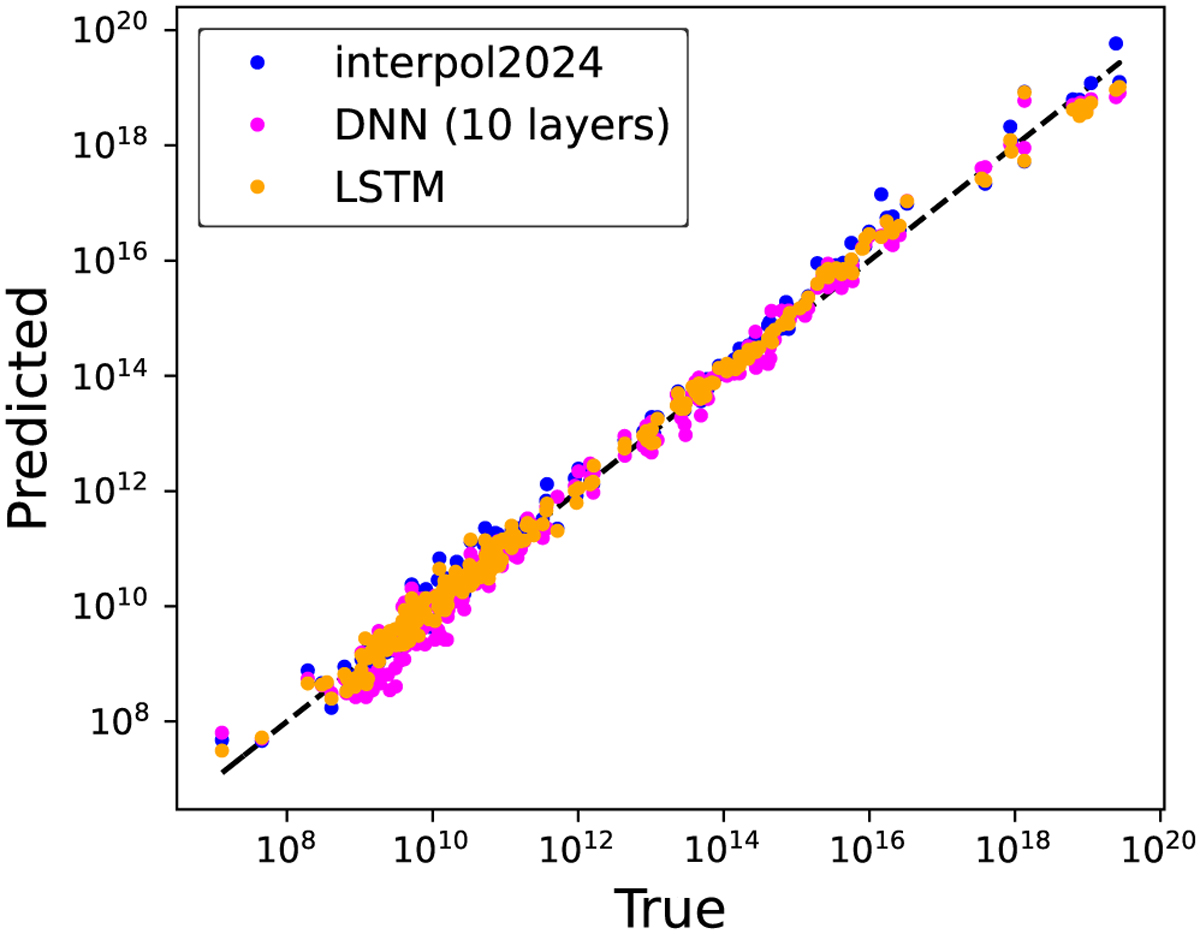Fig. D.1

Download original image
Mass-loss rates predicted using the LSTM (dark yellow), DNN (magenta), and interpol2024 (blue) schemes, compared to the actual values obtained from the hydrodynamic modelling for the test dataset. The LSTM architecture consists of a single LSTM layer with 50 units, while the DNN comprises ten hidden layers with 512 neurons each. The DNN architecture is significantly more complex than the LSTM, resulting in approximately 2.63 million trainable parameters for the DNN compared to around 11,500 for the LSTM. This heavier model impacts the DNN’s overall accuracy, making it less accurate than the LSTM due to overfitting (Hinton 2012). However, with an extended dataset, it is expected that the DNN would perform better on unseen test data.
Current usage metrics show cumulative count of Article Views (full-text article views including HTML views, PDF and ePub downloads, according to the available data) and Abstracts Views on Vision4Press platform.
Data correspond to usage on the plateform after 2015. The current usage metrics is available 48-96 hours after online publication and is updated daily on week days.
Initial download of the metrics may take a while.


